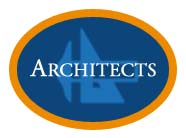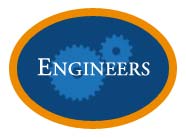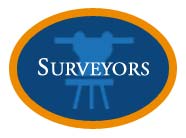Since its introduction in 1961 to track satellites, tripod-based lidar scanners have been used by surveyors to develop high-resolution maps. The 3D scanning technology continues to advance, and in the past decade, handheld scanners have been introduced.
Handheld Scanners?
Handheld scanners are faster, cheaper, and easier to use than traditional tripod methods. In fact, studies by the Center for Advanced Construction Information Modeling at the University of Florida show that one of the models available, the PX-80 developed by Paracosm, is 15 times faster than tripod scanners.
Handheld scanners are used by simply walking around the site – it doesn’t get much easier and faster than that. With most models you can see what you are creating as you walk through and scan the site, allowing for adjustments and changes on the go.
Handheld scanners allow the user to quickly capture indoor and outdoor areas – lighting is not an issue. They combine data from lidar, camera, and accelerometer/gyroscope, which makes for more robust data. The ease of use means even beginners can use it.
The SLAM Advantage
SLAM (simultaneous localization and mapping) based scanners have the true advantage. SLAM is a data processing algorithm that enables the scanner to register color point clouds with short processing times. Most handheld scanners now contain this algorithm.
There are two different SLAM algorithms: real-time processing and post-capture processing. Most scanners use post-capture processing. It’s slower than real-time processing – where your scan is being processed as you walk – but it more reliable. Real-time processing can increase the chances of the algorithm making tracking or processing errors, especially in challenging areas. Many scanners allow the user to select the algorithm that works best for the project.
A Question of Accuracy
Whenever you discuss surveying methods, accuracy is bound to come up. For some surveyors, accuracy is the main decider when selecting technology and others think the focus on accuracy is overrated. Handheld scanner companies are all developing their accuracy numbers in different ways, making it harder to compare the different scanners.
A general contractor decided to compare the PX-80 with a traditional tripod-based lidar scanner (most of the information about SLAM based handheld scanners are about the PX-80 – perhaps because it was one of the first available). The contractor found that there was only a difference in accuracy of +/- 0.06% across the 57-meter-wide site. Many are willing to trade that small amount of accuracy for the incredible time and cost savings the handheld scanners bring.
More Than Just for Surveying
Some of the uses for handheld scanners are construction, forestry management, developing floor plans, oil and gas exploration, facilities maintenance, historic preservation, and architectural design. The capabilities of handheld scanners could bring the applications beyond what we can see now.
As the owner of Paracosm asks, “Once you have progression scans of a site … can you now automatically measure progress? Can you find ways to automatically feed this through quality control engines, and clash detection engines, and generate reports? Can you do analysis of which of your subcontractors is doing a good job?”







 We're more than just brokers. We're A/E specialists, delivering the right coverage and exceptional value and service to hundreds of design firms of all sizes. Of course we leverage the latest industry resources to provide you with coverage, risk management and contract review tailored to your practice. But we also remember the difference between simply billing clients and actually serving them. See for yourself. Contact us of a competitive quote on your professional liability insurance.
We're more than just brokers. We're A/E specialists, delivering the right coverage and exceptional value and service to hundreds of design firms of all sizes. Of course we leverage the latest industry resources to provide you with coverage, risk management and contract review tailored to your practice. But we also remember the difference between simply billing clients and actually serving them. See for yourself. Contact us of a competitive quote on your professional liability insurance.